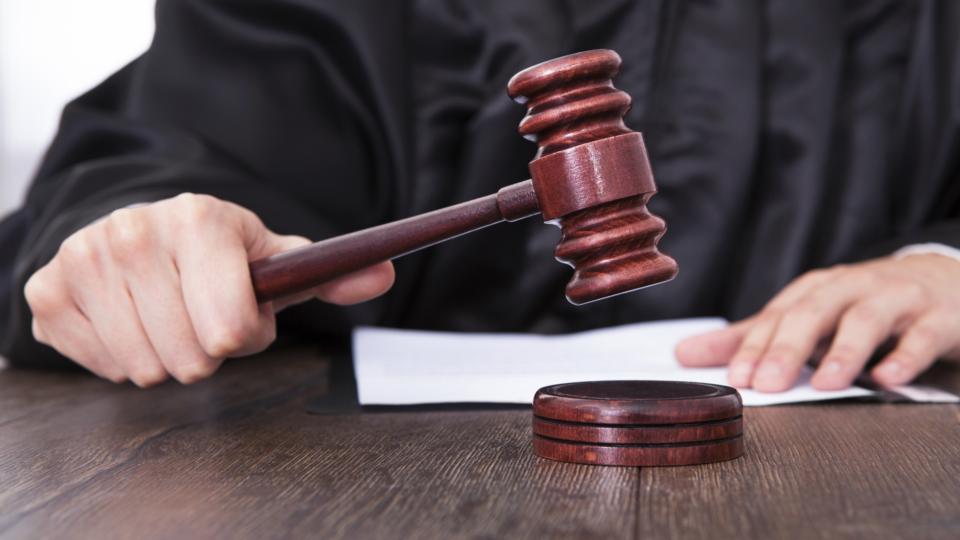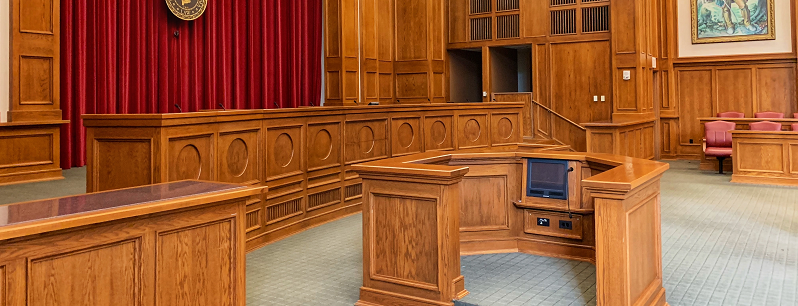Doctrine of Identification
The evolution of the doctrine of identification can be traced from the English Law. The developments in this doctrine have proved beneficial for implying as well as prosecuting all the criminal conducts of managers, officers and directors of the companies. The personality of the owners, directors or promoters of the company is totally different from that of the… Read More »
;
The evolution of the doctrine of identification can be traced from the English Law. The developments in this doctrine have proved beneficial for implying as well as prosecuting all the criminal conducts of managers, officers and directors of the companies. The personality of the owners, directors or promoters of the company is totally different from that of the company. This concept is known as a separate legal entity, which is a widely recognised principle in law and finds its roots from...
The evolution of the doctrine of identification can be traced from the English Law. The developments in this doctrine have proved beneficial for implying as well as prosecuting all the criminal conducts of managers, officers and directors of the companies.
The personality of the owners, directors or promoters of the company is totally different from that of the company. This concept is known as a separate legal entity, which is a widely recognised principle in law and finds its roots from the matter of Solomon v. Solomon.[1] It was held by the Court of law in this matter that the company has its identity which is different from that of the people who takes an active part in running the business of the company.
When the directors, promoters or other officers of the company started to misuse the above-mentioned principle, the court had no other choice but to lift the corporate veil in all those cases where creditors or the shareholders of the corporation are being safeguarded if the corporation is involved in any criminal activity such as fraud and so on.
The companies are provided with the right to sue any other person or corporation in its individual capacity but at the same time, it can also be sued in its own name. In all those cases that are in connection to the crime, the proceedings can be initiated against the company. However, these proceedings are all in vain because there is no possible way to put the company behind the bars or sentence it with the death penalty.
The only way to penalise any company is by the way of levying fine on it, which can be very minimalistic sometimes. The question which arises is whether it is possible to prosecute any company for all those acts committed by it which are criminal in nature and cannot be punished only with just monetary fine.
EVOLUTION OF THE DOCTRINE OF IDENTIFICATION
The 1940s saw the emergence of a new mechanism to impute criminal liability to Corporations in the form of the “identification principle.” Until the 1940s, the courts stuck firmly to the view that it was inappropriate to bring a prosecution against a Company for common law offences requiring proof of a subjective mental element.[2] However, through the 1940s it was observed in a variety of cases that a Company is capable of being malicious, can intend to deceive and can conspire.
First, was the case of DPP v. Kent and Sussex Contractors,[3]in which the Company was charged under the Defence (General) Regulations, 1939 of making use of a document which was false in a material particular and making a statement which they knew to be false in a material particular, with an ‘intent to deceive.’
The Company was made liable. Next, was the case of R v. ICR Haulage Ltd.,[4]in which the Company was charged and found guilty for ‘conspiring to defraud’ and thirdly, was the case of Moore v. Bresler,[5]in which the Company faced charges for embezzlement and tax evasion under the Finance Act No. 2, 1940.
Among the three, the most important was the case of R v. ICR Haulage,[6]since it was the only case among the three to deal with a non-statutory offence. However, in none of these cases was it clear as to how criminal liability was being imputed to a Corporation. No particular pattern seems to be emerging from which a generalization could be made. The case of Tesco v. Nattrass,[7]made some progress in this direction.
Here, considering a charge against the Company under the Trade Descriptions Act, 1968, the House of Lords held that only those who control or manage the affairs of a Company are regarded as embodying or acting as the Company itself for these purposes. This came to be known as the “directing mind” theory of corporate liability.
It was the case of Meridian Global Funds Management Asia Ltd v. Securities Commission,[8]which concretized the ‘identification doctrine’ of corporate criminal liability. This case asserted that in order to attribute knowledge or mens rea to a Corporation, the principle to be applied should be derived from a review of a number of factors: the structure and functions of the Company; who performs them in practice and the policy underpinning the law being enforced.
The problem with the doctrine developed in the Nattrass case was that it was very narrow. In effect, the doctrine provided that only those who were in the position of managing or controlling the affairs of a Company were its representatives, which meant that a company could be held liable for serious offences under the ‘identification principle,’ only if any of its senior-most officers had acted with fault.
It was the case of Meridian Global Funds Management Asia Ltd v. Securities Commission,[9]which concretized the ‘identification doctrine’ of corporate criminal liability. This case asserted that in order to attribute knowledge or mens rea to a Corporation, the principle to be applied should be derived from a review of a number of factors: the structure and functions of the Company; who performs them in practice and the policy underpinning the law being enforced.
The person or persons whose actions are attributable to the Company will be determined so as to give effect to the purpose of the law. If no persons are identifiable, the Company may be liable through default of senior management.
SCOPE IN UNITED KINGDOM
In the UK, criminal liability comes into picture when criminal acts of senior employees, maybe the Board of Directors, could be criminally attributed to the company. It has been very difficult to impose criminal liability on an organization with the concept of mens rea in English Common Law.
Vicarious Liability cannot be brought under a criminal context. Despite vicarious liability, prosecutors relied solely on the identification principle in order to hold the companies criminally liable. This notion attracts the establishment of criminal intent of those officers of the company who are the representative of its mind and will.
Until the 1940s, the courts stuck firmly to the view that it was inappropriate to bring a prosecution against a Company for common law offences requiring proof of a subjective mental element.[10] However, through the 1940s it was observed in a variety of cases that a Company is capable of being malicious,[11] can intend to deceive[12] and can conspire.[13] As time passes, the law changes.
There was a need of change which came into force with the enactment of the 2010 Bribery Act which led to the creation of a new offence of “failing to prevent bribery”. This section is triggered when a person in connection to corporate had paid a bribe to attract or retain business.
Buoyed by the success of the Bribery Act, the UK government brought a new “failure to prevent” offence onto the statute book in 2017, relating to the criminal facilitation of the evasion of the UK and foreign taxes. Not only this but strict liability also come into the light if a person tries to evade tax. The only defence for the corporate lies in its compliance programme, with it having to prove that it had “reasonable” prevention procedures.
SCOPE IN INDIA
The Doctrine of Identification was discussed by the Hon’ble Supreme Court in the recent matter of Reliance Natural Resources Limited v. Reliance Industries Limited. The dispute had arisen between two brothers namely, Mukesh Ambani who was leading RIL and Anil Ambani who was leading RNRL.
The entire group of Ambanis got divided between the two brothers after the demise of their father, Dhirubhai Ambani. The parties were about to reach an arrangement where their mother played the role of a mediator. In this arrangement of the family, Mukesh Ambani went on to make some concessions for RIL and RNRL had to place its reliance on these concessions.
It was held by the Bombay High Court that since the majority shares of the company are possessed by Mukesh Ambani, he is the one who is controlling the mind as well as the will of the company.
The judges observed that in the doctrine of identification, the corporation can be easily identified with all of its key managerial personnel with the help of whom it conducts its ordinary course of business. The above described key personnel of the corporation can be understood as the alter ego of the corporation and their conduct can be considered as the conduct of the corporation per se.
However, the observation is done by Bombay High Court in connection to the doctrine of identification by the Supreme Court. It was observed by the Court that the arrangement done in the family is between the mother and her two sons.
The individual identity of the personnel is different from that of the legal identity of the corporation and for the case at hand, the company which has shareholders counting more than one million, it would be wrong to say that only a single individual was in possession of all the knowledge about the company and that too, in his personal capacity.
The Court took the view of discarding the doctrine on the basis of the facts as the material facts as per the matter are not falling in their purview.
[1][1897] AC 22
[2] Celia Wells, The Millennium Bug and Corporate Criminal Liability, 1999 (2) JOURNAL OF INFORMATION, LAW AND TECHNOLOGY (JILT), information available at http://www2.warwick.ac.uk/fac/soc/lawlelj/jilt/1999_2/wells
[3] [1944] KB 146
[4] [1944] 1 KB 551
[5][1944] 2 All ER 515
[6] Celia Wells, CORPORATIONS AND CRIMINAL RESPONSIBILITY, Oxford University Press,(2″d edn. 2001) p.25
[7] [1972] AC 153
[8][l995] 3 All ER 918
[9] Id.
[10] Celia Wells, The Millenium Bug and Corporate Criminal Liability, 1999 (2) JOURNAL OF INFORMATION, LAW AND TECHNOLOGY (JILT), information available at http://www2.warwick.ac.uk/fac/soc/lawlelj/jilt/1999_2/wells/
[11]Triplex Glass Safety v. Lancegay Safety Glass, [1939] 2 KB 395
[12]DPP v. Kent and Sussex Contractors, [1944] KB 146; See also, Moore v. Bresler, [1944] 2 All ER 515
[13]R v. ICR Haulage Ltd., [1944] 1 KB 551; See also, R v. Sorsky, [1944] 2 All ER 333





